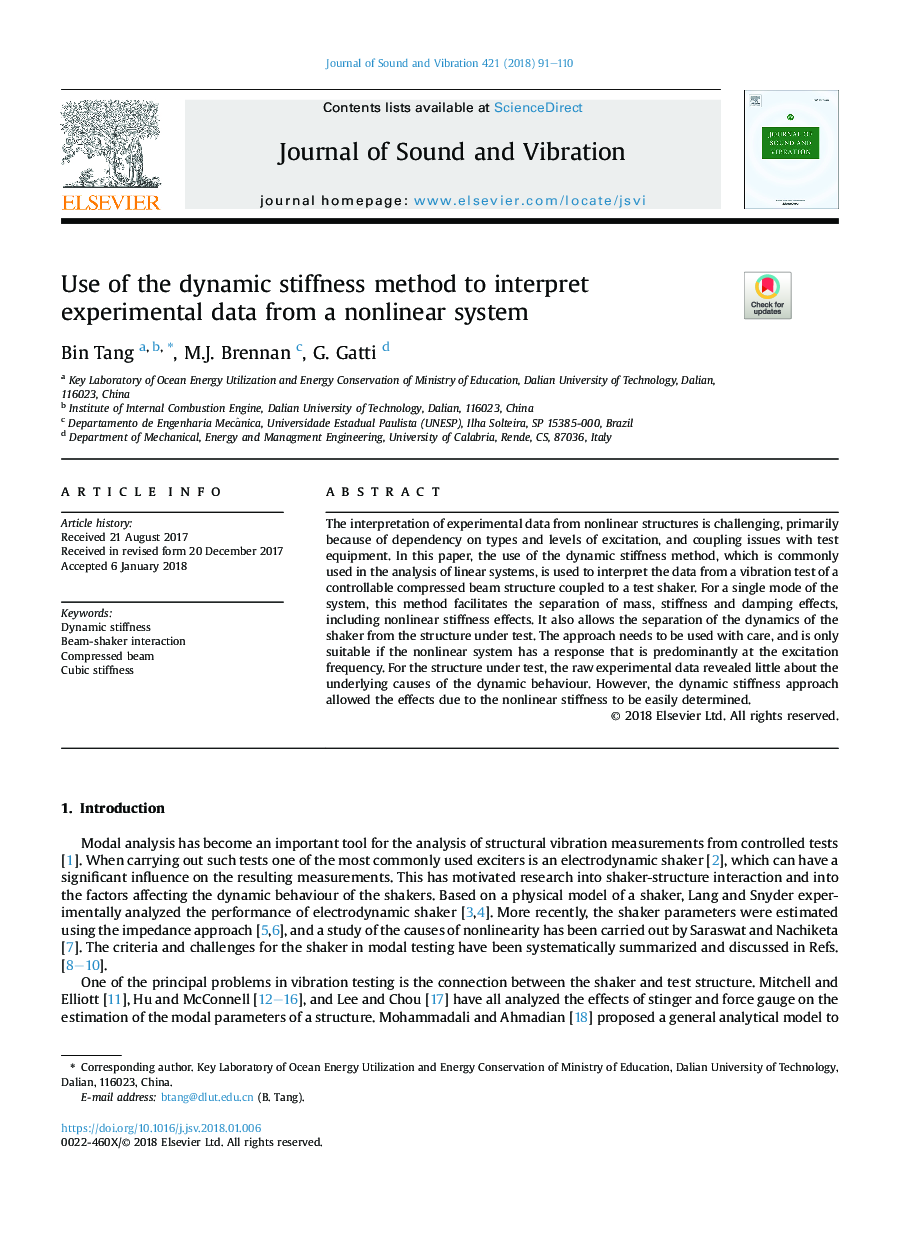| کد مقاله | کد نشریه | سال انتشار | مقاله انگلیسی | نسخه تمام متن |
|---|---|---|---|---|
| 6753456 | 1430812 | 2018 | 20 صفحه PDF | دانلود رایگان |
عنوان انگلیسی مقاله ISI
Use of the dynamic stiffness method to interpret experimental data from a nonlinear system
ترجمه فارسی عنوان
استفاده از روش سختی پویا برای تفسیر داده های تجربی از یک سیستم غیر خطی
دانلود مقاله + سفارش ترجمه
دانلود مقاله ISI انگلیسی
رایگان برای ایرانیان
کلمات کلیدی
ترجمه چکیده
تفسیر داده های تجربی از ساختارهای غیر خطی چالش برانگیز است، در درجه اول به دلیل وابستگی به انواع و سطوح تحریک و مسائل مربوط به اتصال با تجهیزات تست. در این مقاله استفاده از روش سختی پویا، که معمولا در تجزیه و تحلیل سیستم های خطی استفاده می شود، برای تفسیر داده ها از آزمون ارتعاش یک ساختار پرتوهای فشرده کنترل شده همراه با شاکر آزمایش استفاده می شود. برای یک حالت واحد از این روش، تفکیک جرم، سختی و اثرات مضر، از جمله اثرات سختی غیرخطی را تسهیل می کند. این همچنین اجازه می دهد تا جدایی پویایی شاکر از ساختار تحت آزمون. این رویکرد باید با دقت مورد استفاده قرار گیرد و تنها در صورتی مناسب است که سیستم غیر خطی دارای پاسخ است که عمدتا در فرکانس تحریک وجود دارد. برای ساختار تحت آزمایش، داده های آزمایشی خام نشان دادند که علت های اصلی رفتار پویا کم است. با این حال، رویکرد سختی دینامیک، به علت سختی غیرخطی، به راحتی قابل تعیین است.
موضوعات مرتبط
مهندسی و علوم پایه
سایر رشته های مهندسی
مهندسی عمران و سازه
چکیده انگلیسی
The interpretation of experimental data from nonlinear structures is challenging, primarily because of dependency on types and levels of excitation, and coupling issues with test equipment. In this paper, the use of the dynamic stiffness method, which is commonly used in the analysis of linear systems, is used to interpret the data from a vibration test of a controllable compressed beam structure coupled to a test shaker. For a single mode of the system, this method facilitates the separation of mass, stiffness and damping effects, including nonlinear stiffness effects. It also allows the separation of the dynamics of the shaker from the structure under test. The approach needs to be used with care, and is only suitable if the nonlinear system has a response that is predominantly at the excitation frequency. For the structure under test, the raw experimental data revealed little about the underlying causes of the dynamic behaviour. However, the dynamic stiffness approach allowed the effects due to the nonlinear stiffness to be easily determined.
ناشر
Database: Elsevier - ScienceDirect (ساینس دایرکت)
Journal: Journal of Sound and Vibration - Volume 421, 12 May 2018, Pages 91-110
Journal: Journal of Sound and Vibration - Volume 421, 12 May 2018, Pages 91-110
نویسندگان
Bin Tang, M.J. Brennan, G. Gatti,
